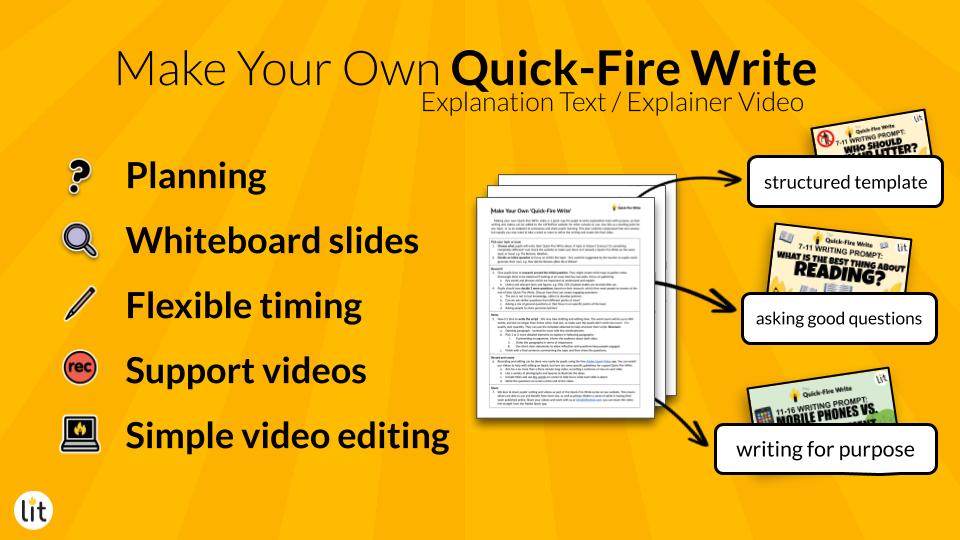

But most of the time, if you are looking for a definition, or a fact, text (with one or two appropriate images or animations if truly needed) is sufficient. When you are researching information, sure, sometimes a visual explanation is the best way to explain something. That doesn't necessarily mean that such interfaces are the right direction for the future in the real world. Movies are visual! They're entertainment! Simple words or text would be boring. It's no wonder interfaces have been portrayed visually in movies. So they copied how some futuristic computer interfaces are portrayed in movies.

Quotes that quite ironically and quite perfectly suggest why I think Qwiki will fail. Quotes from Doug Imbruce, the CEO of Qwiki. "Information is an experience that we can watch.
#Make quick explainer qwiki how to#
Let's consider how to store the same information about a user and their hobbies in a document database like MongoDB."Today, consumers are absolutely overwhelmed with information." The data model we design for a NoSQL database will depend on the type of NoSQL database we choose. In order to retrieve all of the information about a user and their hobbies, information from the Users table and Hobbies table will need to be joined together. In a relational database, we'd likely create two tables: one for Users and one for Hobbies. We need to store a user's first name, last name, cell phone number, city, and hobbies. Let's consider an example of storing information about a user and their hobbies. Then, we'll highlight some of the other key differences between relational databases and NoSQL databases. In this section, we'll work through an example of modeling the same data in a relational database and a NoSQL database. While a variety of differences exist between relational database management systems (RDBMS) and NoSQL databases, one of the key differences is the way the data is modeled in the database. Difference between RDBMS and NoSQL databases To learn more, visit Understanding the Different Types of NoSQL Databases.

Nodes typically store information about people, places, and things, while edges store information about the relationships between the nodes.

They wanted the ability to distribute data across multiple servers and regions to make their applications resilient, to scale out instead of scale up, and to intelligently geo-place their data. NoSQL databases gave them this flexibility.Ĭloud computing also rose in popularity, and developers began using public clouds to host their applications and data.
#Make quick explainer qwiki software#
They needed the ability to iterate quickly and make changes throughout their software stack - all the way down to the database. They were recognizing the need to rapidly adapt to changing requirements. NoSQL databases allow developers to store huge amounts of unstructured data, giving them a lot of flexibility.Īdditionally, the Agile Manifesto was rising in popularity, and software engineers were rethinking the way they developed software. This data came in all shapes and sizes - structured, semi-structured, and polymorphic - and defining the schema in advance became nearly impossible. As storage costs rapidly decreased, the amount of data that applications needed to store and query increased.


 0 kommentar(er)
0 kommentar(er)
